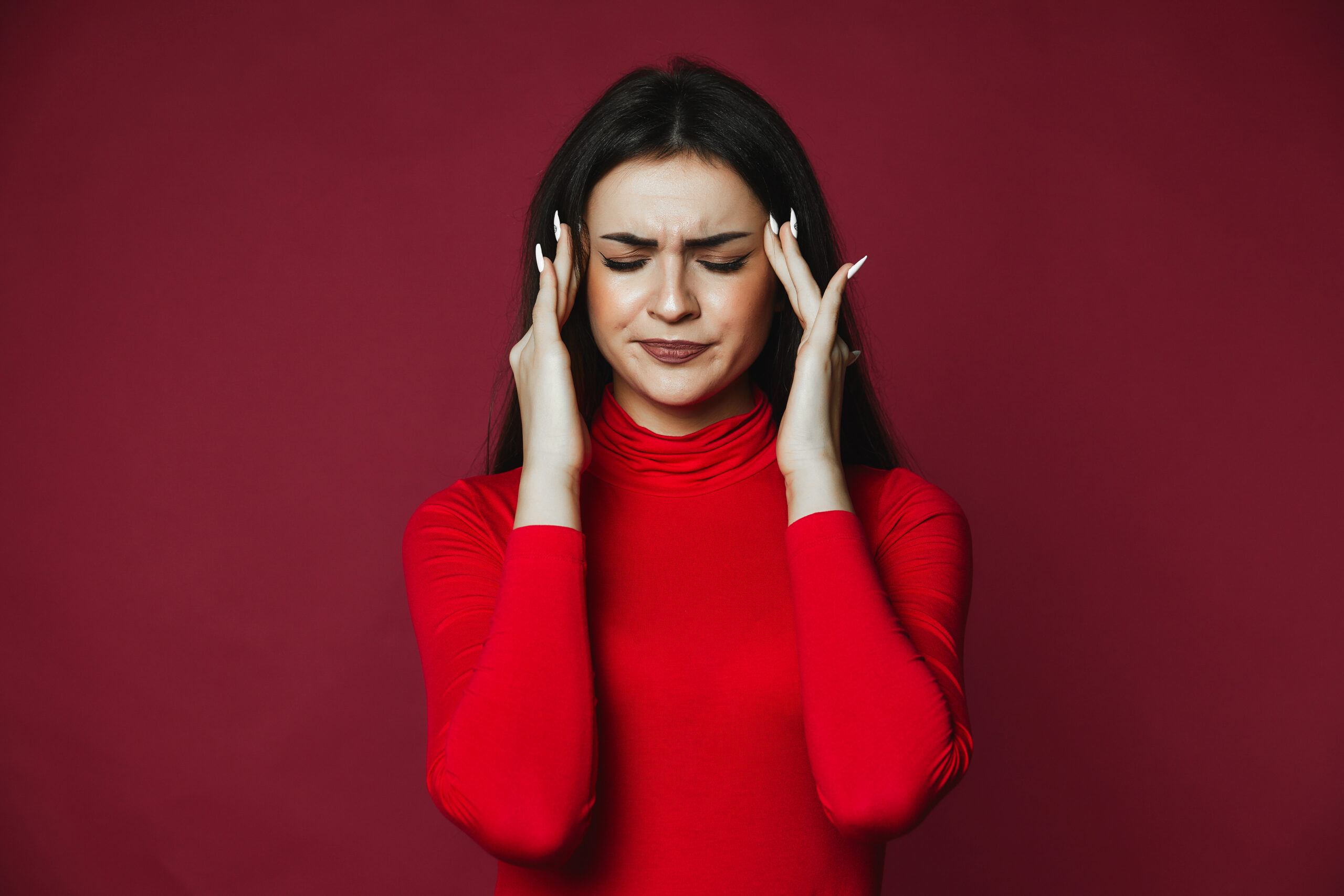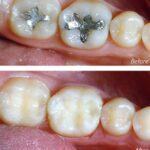At Askdoctor.ai, we know and understand how frustrating and exhausting it can be to live with tension headaches or migraines. The pain can slow you down, affect your focus, and interfere with your daily life. That’s why we created this guide to help you clearly understand the difference between the two, what causes them, and how you can find relief that works for you. We aim to support you with simple, trusted information so you can feel more in control of your health every day.
Tension headaches and migraines are two of the most common types of headaches people deal with every day. According to the American Migraine Foundation, around 39 million people in the U.S. experience migraines, while 30 million suffer from tension headaches. These headaches can seriously affect your daily life, making it hard to focus, work, or even relax.
If you’ve been struggling with headaches, you’re not alone. Whether it’s a dull, tight feeling around your head from a tension headache or a more severe throbbing pain from a migraine, understanding what’s causing your discomfort and finding the right treatments can make a big difference in how you feel.
This article will walk you through the symptoms, causes, treatment options, and lifestyle changes that can help you manage your headaches. By the end, you’ll have a better idea of what works for you and how to find relief.
Tension Headaches & Migraines: What’s the Difference?
Headaches can be painful, but not all headaches are the same. Tension headaches and migraines are two of the most common types, and while they may both cause significant discomfort, their symptoms, intensity, and triggers are very different. Let’s break it down.
Tension Headaches: The Common Ache
Tension headaches are the most common type, often described as a constant, dull pain. You might feel like there’s a tight band wrapped around your head, and sometimes the pain can spread to your neck or shoulders. Here are the most common symptoms:
- A dull, aching pain around the head
- Tightness or pressure in the scalp, neck, or shoulders
- Tenderness in the neck, scalp, or shoulder muscles
- Unlike migraines, there’s no nausea or vomiting
Migraines: More Than Just a Headache
Migraines are different because they come with much more severe symptoms. They’re not just painful; they can also affect your ability to do everyday tasks. Common migraine symptoms include:
- Throbbing or pulsating pain, often on one side of the head
- Sensitivity to light, sound, or smells
- Nausea or vomiting
- Visual disturbances (such as seeing flashing lights or zigzag patterns, known as an aura)
- Fatigue and irritability
Migraines usually last longer than tension headaches—anywhere from 4 to 72 hours—and can be quite debilitating.
What Causes Tension Headaches?
Tension headaches are often tied to lifestyle habits, and understanding these triggers can help prevent them. Common causes include:
- Stress and anxiety: Emotional tension can cause the muscles in your neck and scalp to contract, leading to a headache.
- Poor posture: Sitting for long hours at a desk with bad posture can strain the neck and shoulders, contributing to tension headaches.
- Lack of sleep: Not getting enough rest or having an irregular sleep schedule can trigger a headache.
- Dehydration: Not drinking enough water can lead to headaches.
- Caffeine withdrawal: If you suddenly stop drinking coffee or other caffeinated drinks, it can cause a tension headache.
What Causes Migraines?
Migraines have a more complex set of triggers, and they often have a genetic link. Some of the most common causes of migraines include:
- Genetics: Migraines tend to run in families, and certain genetic factors may increase the likelihood of developing them.
- Hormonal changes: For women, hormonal fluctuations during menstruation, pregnancy, or menopause can trigger migraines.
- Weather and environmental factors: Changes in weather, barometric pressure, or exposure to bright lights can set off a migraine.
- Certain foods and drinks: Foods like chocolate, aged cheese, alcohol, and caffeinated drinks are well-known migraine triggers.
- Medication overuse: Using pain medications too frequently can cause “rebound” headaches, leading to even more migraines.
According to the National Institutes of Health (NIH), migraines are three times more common in women than in men, with about 18% of women experiencing migraines compared to just 6% of men. Additionally, migraines are the third most common disease globally, affecting around 12% of the population.
Understanding the difference between tension headaches and migraines, as well as what triggers them, you can start to take steps toward prevention and find better ways to manage the pain when it occurs.
Treatment Options for Tension Headaches & Migraines
When it comes to treating tension headaches and migraines, there are both conventional and alternative options to explore. Let’s take a closer look at some of the most common treatments for each condition.
Conventional Treatments for Tension Headaches
Tension headaches can be treated in several ways, and most treatments aim to relieve pain and reduce muscle tension. Common approaches include:
- Over-the-counter (OTC) pain relievers: Medications like ibuprofen (Advil), acetaminophen (Tylenol), and aspirin are often effective for mild to moderate tension headaches. Hence, these medications work by reducing inflammation and blocking pain signals in the brain.
- Heat or cold therapy: Applying a warm compress or heating pad to the neck and shoulders can help relieve muscle tension, which is a common cause of tension headaches. Alternatively, a cold pack can be used to reduce inflammation and ease pain.
- Massage therapy: Therapeutic massage, especially when focusing on the shoulders, neck, and upper back, can help release tension in the muscles and reduce the pain associated with tension headaches. Many people find relief with regular massage therapy.
Conventional Treatments for Migraines
Migraines, being more complex and severe, often require stronger treatments. Conventional treatments include:
- Prescription medications: Triptans (such as sumatriptan) are commonly prescribed to treat acute migraine attacks. These medications work by constricting blood vessels and blocking pain pathways in the brain, providing relief from the intense pain of a migraine.
- Preventive medications: For individuals who experience chronic migraines, doctors may prescribe medications such as beta-blockers, antidepressants, or anti-seizure drugs. Additionally, these medications help to prevent migraines from occurring or reduce their frequency.
- CGRP inhibitors: A newer class of medications called CGRP inhibitors (Calcitonin Gene-Related Peptide inhibitors) has shown promise in reducing the frequency and intensity of migraines. Also, drugs like Aimovig and Emgality have been approved by the FDA to help prevent migraines, offering an effective solution for those with frequent migraine episodes.
Alternative & Natural Remedies
As many people seek natural or complementary treatments to manage their headaches, several promising alternatives are becoming more popular. Here are some options:
- Magnesium supplementation: Research has shown that magnesium deficiency is linked to migraines, and taking magnesium supplements may help reduce the frequency and severity of migraine attacks. A 2021 study published on PubMed highlights the benefits of magnesium in migraine management.
- Acupressure and acupuncture: Both acupressure and acupuncture involve stimulating specific points on the body to restore energy flow and alleviate pain. These therapies are effective in relieving the symptoms of both tension headaches and migraines. Many people find these treatments to be relaxing and beneficial for long-term headache relief.
- Herbal remedies: Some herbal treatments, such as feverfew and butterbur, have been studied for their potential to prevent migraines. However, it’s important to consult with a healthcare provider before starting any supplement, as these remedies may interact with other medications. A study from clinical trials at Mayo Clinic suggests that feverfew and butterbur may help reduce migraine frequency.
- Sound therapy: Emerging research on sound therapy is also showing promise. Specifically, Royal Rife healing frequencies, which are designed to target head pain, have been explored as an alternative method for headache relief. These frequencies are emitted through speakers or headphones placed near the affected area, aiming to alleviate symptoms by balancing the body’s natural energy fields and promoting healing.
Simple Tips for Managing Tension Headaches & Migraines
Making small adjustments to your lifestyle can have a big impact on reducing both tension headaches and migraines. Here are a few key tips for managing each:
For Tension Headaches:
- Stretch regularly: Take a few minutes each hour to stretch your neck and shoulders, especially if you’re sitting for long periods. This can help release tension and prevent headaches.
- Manage stress: Stress is a major trigger. Try yoga, meditation, or deep breathing exercises to keep your stress levels in check. Apps like Headspace can help.
- Stay hydrated: Drink at least 8 glasses of water a day to prevent dehydration, which can trigger headaches.
- Sleep well: Stick to a consistent sleep schedule and limit screen time before bed to improve sleep quality.
For Migraines:
- Track your triggers: Keep a headache diary to identify patterns and triggers, like certain foods or lack of sleep. The American Migraine Foundation offers helpful tracking tools.
- Routine is key: Regular meals and consistent sleep (7-9 hours) can reduce migraine frequency.
- Limit sensory overload: Avoid bright lights, strong smells, and loud noises. Sunglasses and noise-canceling headphones can help.
- Practice relaxation: Stress is a major migraine trigger. Mindfulness or progressive muscle relaxation (PMR) can help reduce tension and prevent migraines.
Small, consistent lifestyle changes can make a big difference in managing headaches. Start with one or two habits today for relief.
Real-Life Stories
Understanding that you’re not alone can be a powerful part of managing chronic headaches. Here are two real-life accounts that offer both hope and practical insights into living with tension headaches and migraines.
Bernadette’s Story: Living with Chronic, Intractable Migraines
Bernadette Gorczyca suffered from intense, long-lasting migraines for years, often without effective treatment. During the pandemic, her symptoms worsened, but finding the Migraine Strong support group helped change everything. With proper diagnosis and tools like migraine glasses, neuromodulation devices, and lifestyle adjustments, Bernadette now manages her daily migraines while working from home.
Migraine Unfiltered: What Living with Migraines is Really Like
The short documentary, Migraine Unfiltered, brings together real voices from around the world to show what it’s truly like to live with chronic migraines. People share how migraines impact their careers, relationships, and mental health while also discussing how they manage symptoms day to day.
This visual story helps raise awareness and paints a realistic, compassionate picture of life with migraines.
These personal stories highlight that with the right support and tools, managing chronic headaches is not only possible—but empowering.
FAQs About Tension Headaches and Migraines
1. What’s the main difference between a tension headache and a migraine?
Tension headaches cause a dull, pressing pain around the head, often on both sides. Migraines are usually more intense, often one-sided, and may include nausea, light sensitivity, or visual disturbances.
2. Can stress alone trigger migraines?
Yes. Stress is one of the most common migraine triggers, particularly when it’s chronic. It can also lead to tension headaches.
3. Are migraines more common in women?
Yes. Migraines are about three times more common in women than in men, largely due to hormonal fluctuations.
4. Can dehydration cause tension headaches?
Absolutely. Not drinking enough water can trigger or worsen tension headaches. Aim for at least 8 glasses a day.
5. Is there a cure for migraines or tension headaches?
There’s no one-size-fits-all cure, but many people find relief through medication, lifestyle changes, and identifying triggers.
Finding Relief and Support Is Possible
Tension headaches and migraines can feel like they take over your life, but you’re not alone, and you’re not without options. From small lifestyle tweaks to medical support and alternative therapies, relief is within reach for these chronic conditions. It may take time and some trial and error, but finding what works for you is possible. The most important thing? Don’t give up. Talk to your doctor, lean on your support system, and take care of your body and mind.
If you’ve found something that’s helped—whether it’s a daily walk, meditation, or a specific remedy—your story could be the inspiration someone else needs. So, drop a comment below and share your journey. Let’s support each other, one step (and one headache-free day) at a time.
References:
American Migraine Foundation
National Institutes of Health (NIH)
PubMed
Journal of Clinical Neurology
U.S. Food and Drug Administration (FDA)
Migraine Strong Support Group
American Headache Society









Leave a Reply